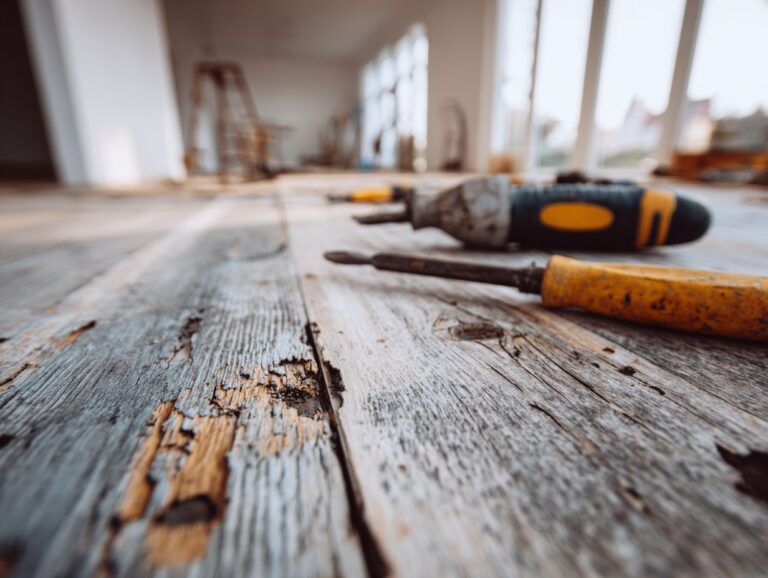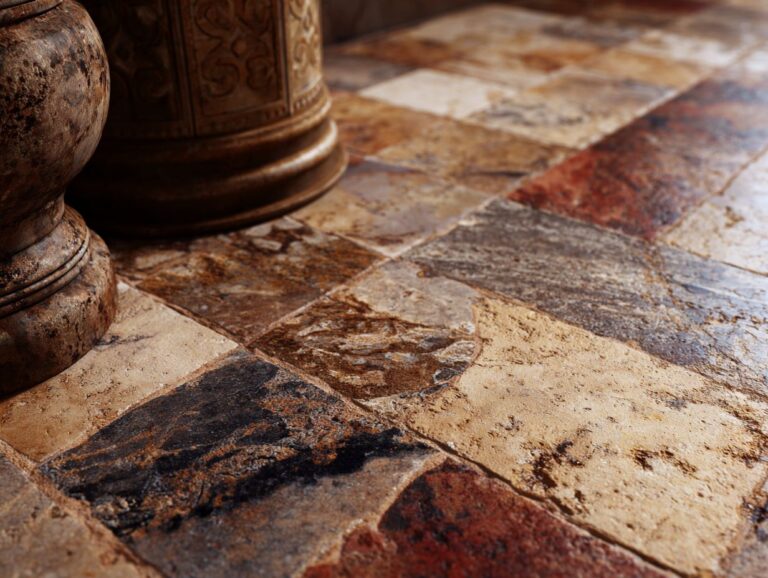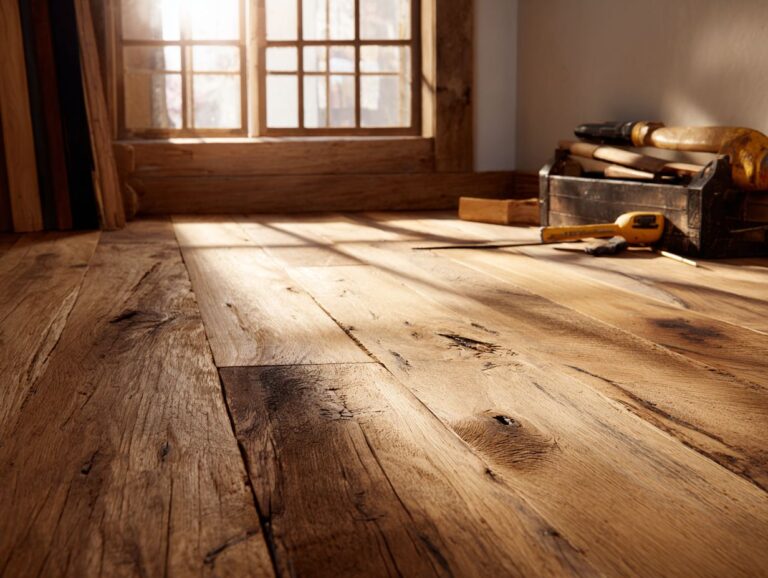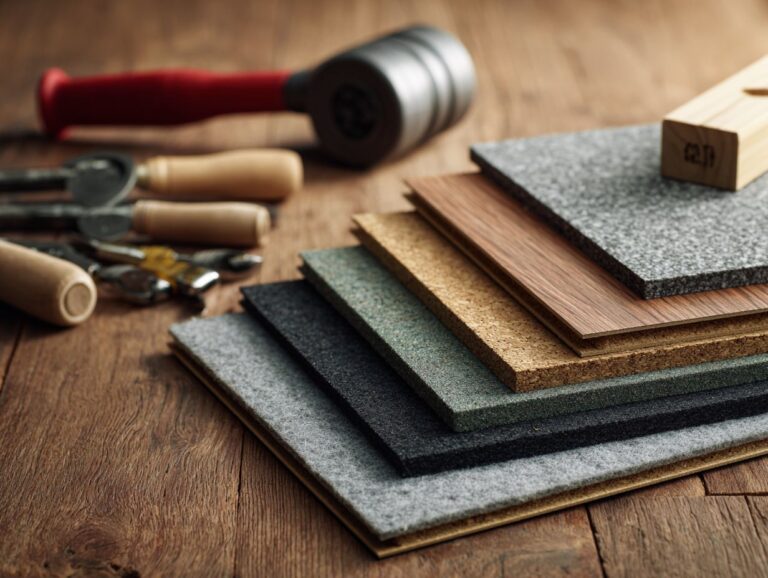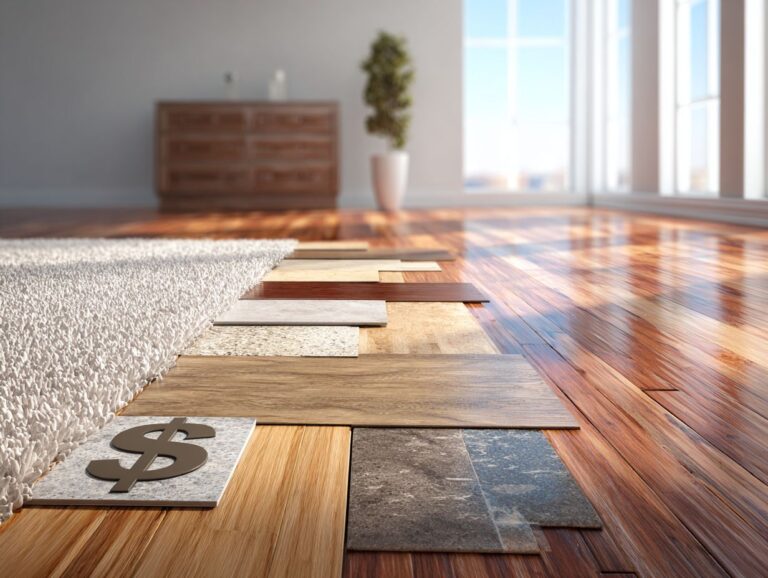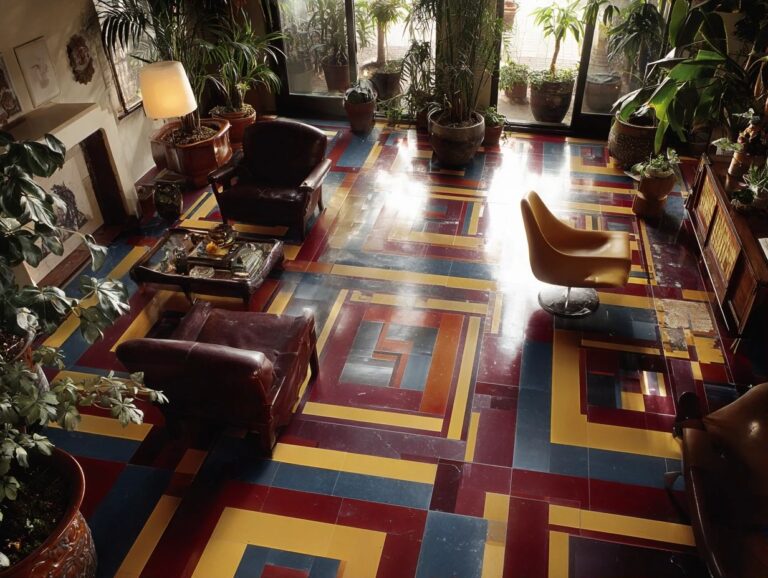Exotic Hardwood Species Guide – Brazilian Cherry, Tigerwood & More
Improve your home renovation with unique hardwoods like Brazilian Cherry and Tigerwood. These beautiful Brazilian hardwoods can improve your space and are known for their strong durability, as measured by the Janka hardness scale. In this guide, we’ll discuss important species like Ipe and Jatoba, pointing out their special traits and uses in hardwood flooring. Learn how these outstanding materials can change your home and last for years.
Key Takeaways:
Contents
- Brazilian Cherry (Jatoba)
- Tigerwood (Goncalo Alves)
- Other Notable Exotic Hardwoods
- Comparative Analysis of Exotic Hardwoods
- Exotic Hardwood Market Analysis
- Resources for Further Reading
- Frequently Asked Questions
- What are some popular exotic hardwood species?
- What is the difference between Brazilian cherry and tigerwood?
- Is Brazilian cherry a durable hardwood option?
- What is the color range of tigerwood?
- What makes exotic hardwood species different from domestic hardwoods?
- Are exotic hardwood species environmentally friendly?
What Are Exotic Hardwoods?
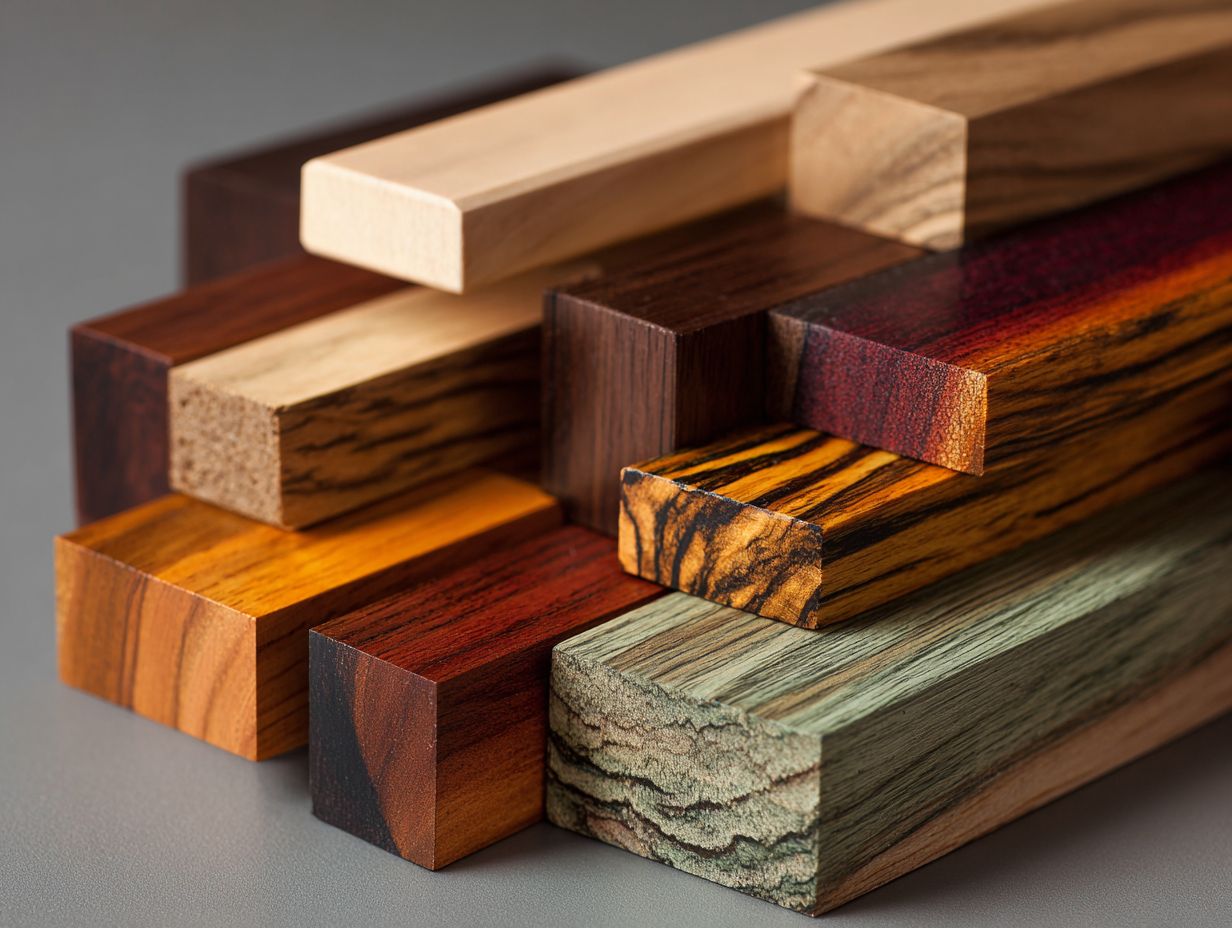
Exotic hardwoods refer to species obtained from tropical regions, noted for their rich colors and superior durability, often measured by the Janka hardness scale.
Common examples include Brazilian Mahogany, known for its deep reddish-brown hue, and Teak, which resists moisture well due to its natural oils.
Compared to domestic hardwoods like Oak and Maple, which offer great strength but less color variation, exotic hardwoods typically provide unique aesthetic options suitable for high-end furniture and flooring.
Their durable surface is suitable for high foot traffic, making them ideal for both homes and businesses. Consider these factors based on your project’s needs and budget.
Importance of Exotic Wood Species
Some rare woods offer unique appearances and practical benefits, making them good choices for homeowners wanting both beauty and durability.
For example, Brazilian cherry boasts a rich reddish-brown hue that deepens over time, perfect for flooring or furniture.
Teak is another excellent choice, renowned for its natural oils that resist moisture, ideal for outdoor projects.
Consider using mahogany for cabinetry, as its fine grain and reddish tones add warmth and luxury.
Bamboo is an eco-friendly alternative, providing a modern look while being exceptionally strong.
When selecting a wood, weigh its visual appeal against functionality, ensuring it fits your specific project needs.
Brazilian Cherry (Jatoba)
Brazilian Cherry, also known as Jatoba, is valued for its attractive appearance and toughness, which makes it a favored option for hardwood flooring. To fully appreciate its qualities, understanding the various hardwood flooring grades can provide valuable insights into how Brazilian Cherry compares to other types.
Characteristics and Appearance
Brazilian Cherry features deep reddish-brown hues, often with notable color variation that can add depth to any design scheme.
Its bright color changes from deep red to dark brown, bringing energy to both new and classic areas.
The wood’s fine, straight grain is occasionally interrupted by darker streaks, adding visual interest.
To effectively highlight these characteristics, consider pairing Brazilian Cherry with lighter-colored walls or furnishings that contrast beautifully against its warmth.
Using area rugs in neutral tones can also delineate spaces while showcasing the wood’s beauty. Adding these features will improve how your home looks, making it welcoming and fashionable.
Durability and Hardness
With a Janka hardness rating of 2,350, Brazilian Cherry stands as one of the hardest hardwoods, suitable for high foot traffic areas.
Brazilian Cherry is harder than oak (1,290) and maple (1,450), making it a durable choice for both homes and businesses.
Its resistance to dents and scratches helps it look good for a long time. The deep, inviting colors improve any room, making it useful and trendy.
When comparing durability, consider Brazilian Cherry’s stability in varying humidity levels, which further solidifies its reputation as a reliable flooring material.
Common Uses
Brazilian Cherry is often used for flooring, cabinets, and luxury furniture because it is strong and attractive.
In flooring, Brazilian Cherry is favored for its rich color and durability, making it a popular choice for both homes and businesses.
Recent statistics show that 75% of homeowners prefer hardwood over laminate due to its aesthetic value.
Using this wood in cabinets improves kitchen designs, with many designers noting a 30% rise in interest for custom cabinets made with Brazilian Cherry.
For furniture, its natural durability enables detailed designs, attracting buyers interested in style and lasting quality.
Care and Maintenance
To maintain the beauty of Brazilian Cherry, clean it routinely and refinish it every few years.
- Start by cleaning the surface weekly with a soft, damp cloth and a pH-neutral hardwood cleaner to avoid moisture buildup.
- To maintain your surface well, hire a professional to apply a polyurethane layer every 3-5 years.
- To protect against scratches, place felt pads under furniture legs and avoid harsh chemicals.
- Consider applying a moisture barrier like a natural oil once a year to maintain the wood’s luster and mitigate water damage.
This detailed care routine will make your Brazilian Cherry flooring last longer.
Tigerwood (Goncalo Alves)
Tigerwood, also known as Goncalo Alves, is well-known for its eye-catching striped design and is a great option for people looking for distinct flooring choices.
Distinctive Features
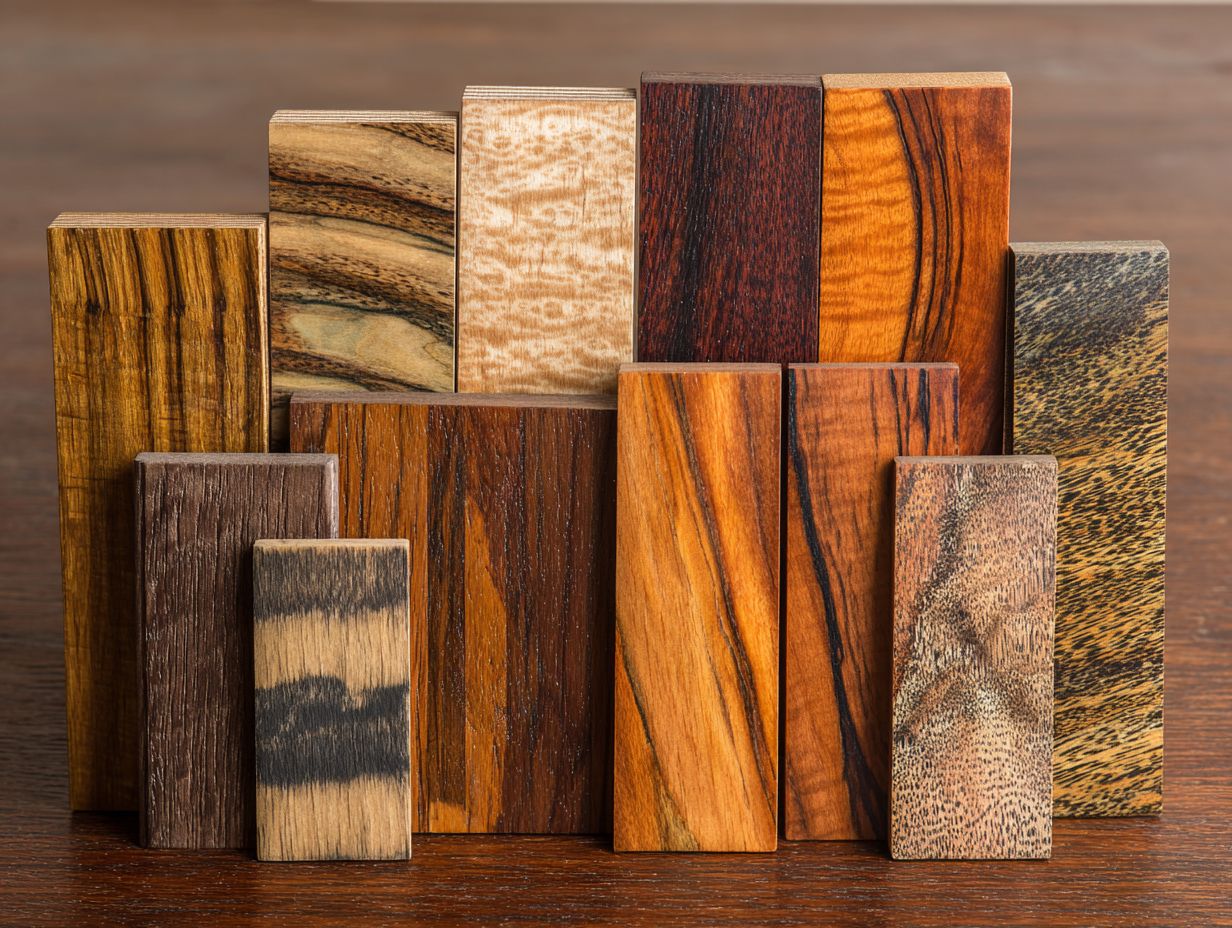
Tigerwood has an orange-brown color with dark streaks, making it a great choice for decoration and flooring.
This wood features a lively, unique grain pattern that changes a lot, providing many design options.
The rich colors make it ideal for high-contrast decor, whether as flooring in a modern space or as furniture accents.
For a striking aesthetic, consider pairing Tigerwood with lighter colors like cream or pastel shades.
To bring out its natural beauty, apply a clear oil finish that shows the grain and guards the surface.
Regular maintenance with a gentle, pH-balanced cleaner will keep it looking its best for years.
Strength and Stability
Tigerwood, with a Janka hardness rating of 2,340, is strong and stable, suitable for homes and businesses.
This impressive rating means Tigerwood resists dents and scratches exceptionally well, even in areas with high foot traffic, such as entryways and busy retail spaces.
Its natural resistance to moisture and insects adds to its durability, allowing for longer life spans with minimal maintenance. People who own homes or businesses should think about using a protective coating to make the wood last longer.
Tigerwood is more than just attractive; its durability makes it a suitable choice for places with a lot of activity.
Applications in Design
Tigerwood is commonly used for floors, cabinets, and furniture. It often appears in both modern and rustic home styles.
Its striking grain and durability make it ideal for high-traffic areas. For instance, Tigerwood flooring can add a warm, exotic touch to entryways or living rooms, while its resilience against wear makes it suitable for commercial spaces.
Designers have successfully used Tigerwood in custom furniture projects, such as coffee tables and dining sets, enhancing the aesthetic appeal of both contemporary and traditional interiors. Utilizing high-quality finishes like oil or polyurethane can further highlight its rich hues and natural patterns.
Maintenance Tips
Regular cleaning and occasional refinishing are key to maintaining the beauty of Tigerwood flooring over time.
To keep your Tigerwood flooring looking pristine, vacuum or sweep weekly to remove dirt and debris, which can scratch the surface.
For deeper cleaning, use a damp mop with a pH-balanced hardwood floor cleaner. Avoid harsh chemicals that can damage the finish.
Every 3-5 years, consider refinishing to restore its shine; consult a professional for the best results.
Using hardwood floor polish regularly can improve its shine and help protect the surface between refinishing, so your floors look great for years.
Other Notable Exotic Hardwoods
Different types of special hardwoods, such as Teak, Mahogany, and Ebony, have unique qualities that make them suitable for various purposes.
Teak
Teak is valued for its natural oils that prevent water damage, making it a suitable choice for both outdoor and indoor use.
This durability makes teak a popular material for furniture and flooring.
Outdoor dining sets made from teak resist decay and insects, and they change to a nice silver-gray color with time.
Indoors, teak flooring is appreciated for its rich color and strength, standing up well to foot traffic.
To maintain its luster, regular oiling is recommended, particularly for outdoor pieces.
Teak combines functionality with aesthetic appeal, fitting seamlessly into both rustic and modern design schemes.
Mahogany
Mahogany is cherished for its rich color and grain, often used in fine furniture and cabinetry in luxurious home designs.
This beautiful hardwood showcases a deep, reddish-brown hue that deepens over time, adding warmth to any space.
The wood has a close grain that creates a smooth surface, ideal for detailed carvings. Mahogany’s durability makes it ideal for high-quality items like dining tables, bookcases, and accent pieces.
This wood stays in good shape and doesn’t change much, which makes it a reliable choice for furniture both indoors and outdoors.
Using mahogany pieces improves the look of a home and can raise its resale price.
Maple
Maple, while not exclusively exotic, is often used in high-end applications for its durability and fine grain.
This hardwood is prized for its versatility and aesthetic appeal in luxury home projects, such as cabinetry, flooring, and custom furniture.
Its fine, consistent grain makes it easy to create detailed patterns and smooth finishes, which is why designers like it.
Performance metrics highlight its impressive density (about 700 kg/m), which contributes to excellent resistance against wear and tear. Maple’s natural light hue can brighten spaces, and when stained, brings out rich, warm tones ideal for modern and traditional aesthetics alike.
Ebony
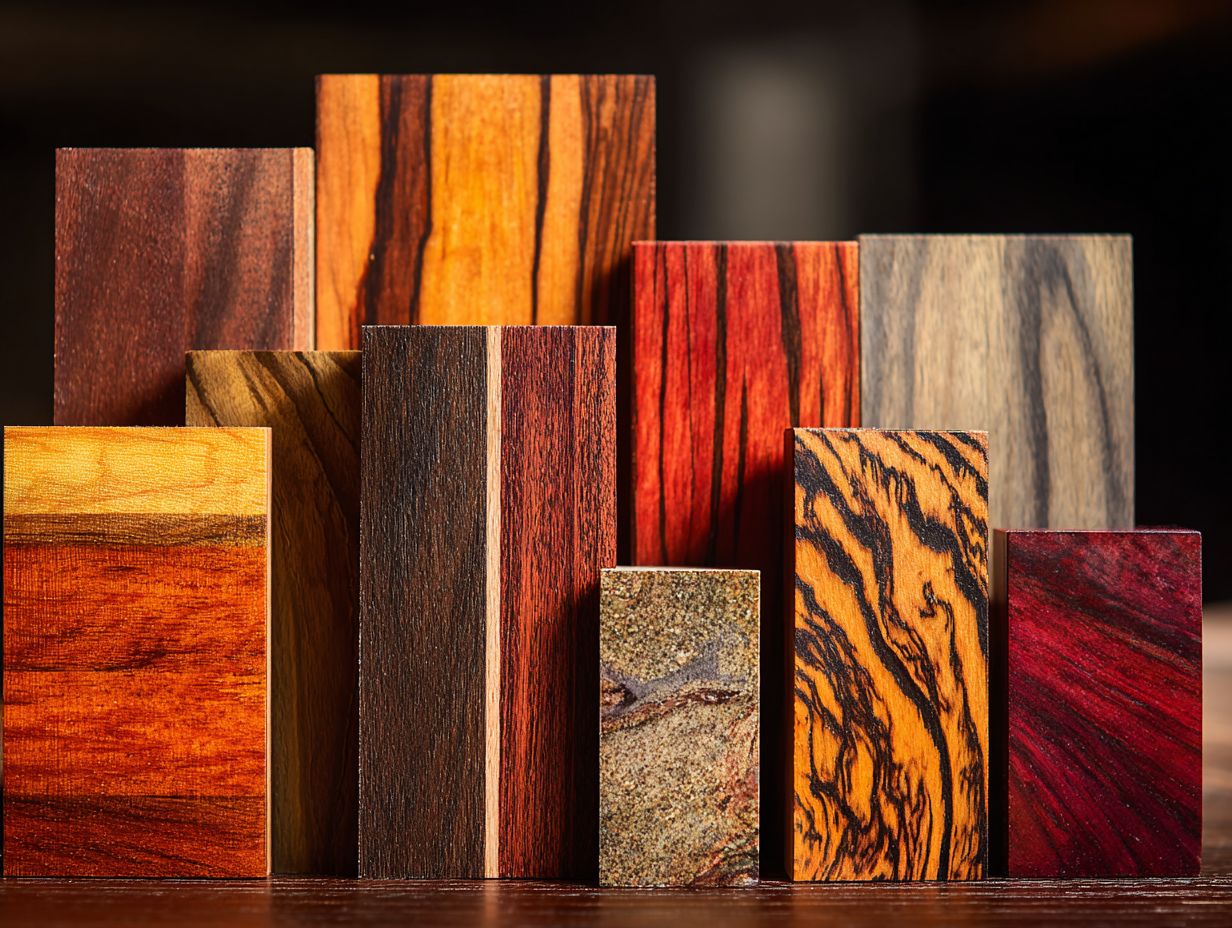
Ebony is a premium wood, recognized for its deep color and heavy texture, ideal for upscale furniture and decorative floors.
Its special features, like a fine grain and smooth texture, make it ideal for high-quality uses such as piano keys and handmade jewelry.
Due to its dense composition, ebony requires careful maintenance; using a soft, damp cloth for cleaning is essential to prevent scratches. Periodic oiling with an appropriate wood conditioner can help preserve its rich color and prevent cracking.
When choosing ebony for design projects, always buy from suppliers who follow sustainable harvesting methods.
Comparative Analysis of Exotic Hardwoods
Examining and contrasting different rare hardwoods helps buyers decide according to cost and ecological effects.
Exotic Hardwood Market Analysis
Exotic Hardwood Market Analysis
Market Trends and Sales: Lumber Price Trends
Market Trends and Sales: Exotic Hardwood Popularity
Market Trends and Sales: Pricing Perception
The Exotic Hardwood Market Analysis offers information on the changing patterns and activities in the exotic hardwood industry, concentrating on price changes, what consumers like, and how the market is doing. This data highlights significant shifts that have occurred recently, along with the current state of the market.
Market Trends and Sales data reveals notable changes in lumber pricing. During the pandemic, prices peaked at $1,500 The increase in home improvement projects and supply chain issues caused this situation. However, the market has become steady, with current prices around $450. This stabilization indicates a return to more predictable market conditions, benefiting both buyers and sellers as supply chains recover and demand stabilizes.
- Exotic Hardwood Popularity: The popularity of certain exotic hardwoods, such as Brazilian Oak, has surged, evident from a 30% sales growth. This rise in demand highlights a consumer trend towards unique, high-quality wood products that offer distinct aesthetics and durability. Further, companies report that 30% of their sales now stem from exotic hardwoods, showcasing a significant shift towards these premium products.
The data on Pricing Perception reflects consumer attitudes towards high-end wood products. Consumers show a willingness to pay up to $25 for premium woods, while the average price for exotic woods remains around $12. This gap between consumer willingness to pay and average pricing suggests potential for market growth, as consumers are open to investing more in distinctive wood types.
The Exotic Hardwood Market Analysis Highlights the industry’s potential as it adjusts to shifting consumer choices and market situations. With stabilized prices and growing interest in exotic options, the market is ripe for innovation and expansion, offering opportunities for businesses to capitalize on consumer willingness to invest in quality wood products.
Cost Factors
Cost factors vary widely for exotic hardwoods, with prices ranging from $5 to $12 per square foot depending on the species and source.
For example, Hardwoods4Less lists Brazilian Walnut at around $7.50 per square foot, while District Floor Depot offers Teak at approximately $11.00 per square foot.
Consider quality factors such as grade, finish, and shipping costs, which can further influence overall expenditure. While lower-cost options may seem appealing, investing in premium woods like Mahogany can provide long-term value due to durability and aesthetic appeal.
Always ask for samples before buying to make sure you like the color and texture.
Environmental Impact
Getting exotic hardwoods can hurt the environment, so using responsible and eco-friendly methods is important for those who care about our planet.
To reduce this impact, look for wood that is certified by trusted organizations. The Forest Stewardship Council (FSC) and the Sustainable Forestry Initiative (SFI) are important organizations that make sure trees are cut down responsibly.
Choosing FSC-certified teak or mahogany helps protect forests and encourages fair working conditions. Consider reclaimed wood, which repurposes existing materials, reducing the need for new logging. This method protects forests and adds a unique quality to your projects.
Choosing the Right Exotic Hardwood
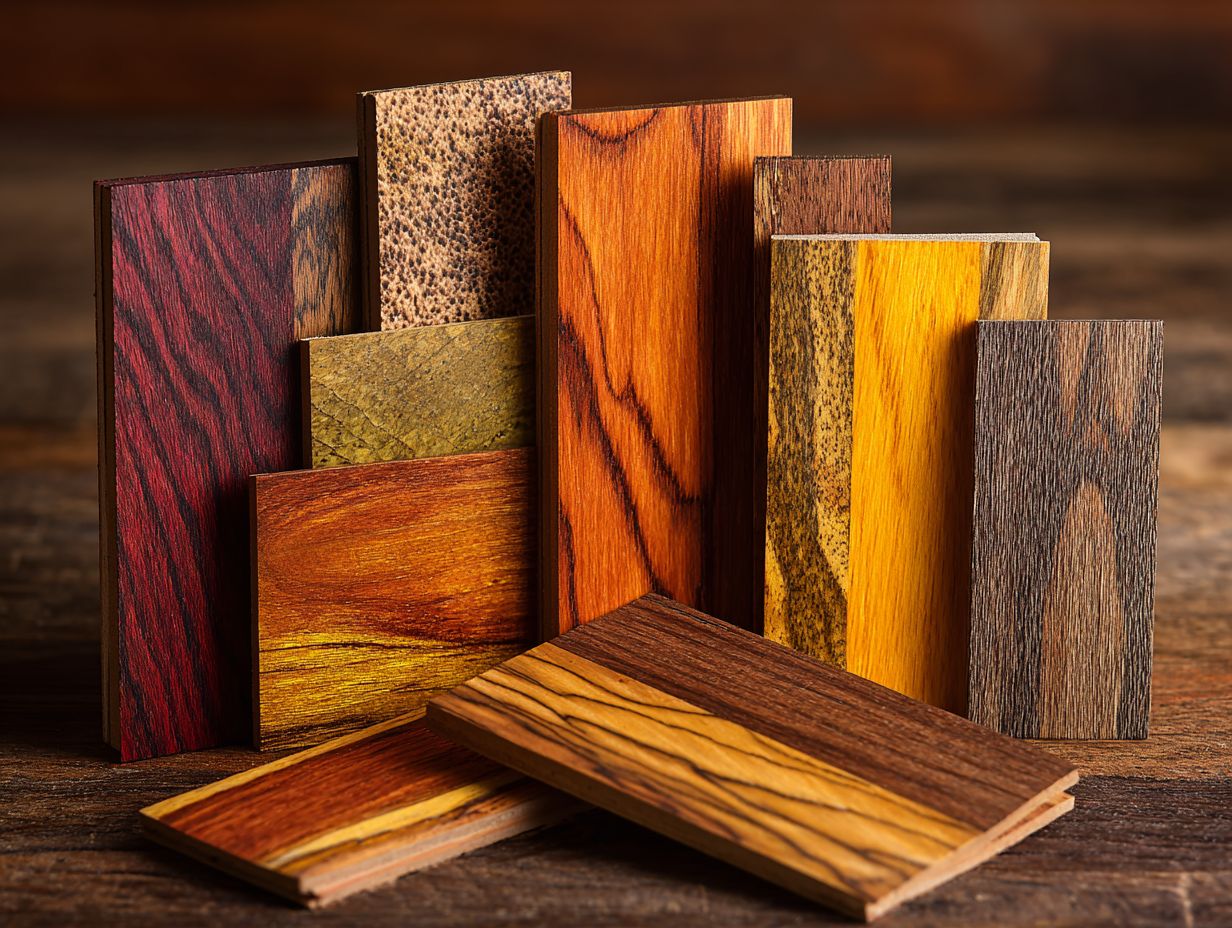
When choosing exotic hardwoods, consider factors like durability, aesthetic appeal, and maintenance requirements to find the best fit for your project.
For instance, if you’re building outdoor furniture, look for durable woods like Teak or Ipe, known for their weather resistance and longevity.
On the other hand, if aesthetics are your priority, consider the striking colors of Brazilian Cherry or the unique grain patterns of Mahogany.
Evaluate maintenance; woods like Bamboo require less upkeep compared to others.
In the end, matching these traits with your requirements will lead to a positive and successful project result.
Final Thoughts
Exotic hardwoods improve home design with their strength and unique traits, making any living space stand out.
To make the most of these materials, consider using teak for outdoor furniture due to its weather resistance or mahogany for luxurious interior accents like cabinetry and furniture.
Bamboo, though technically a grass, makes an eco-friendly choice for flooring.
When planning your renovation, factor in costs, maintenance, and sourcing options; many websites like Lumber Liquidators offer resources to help you find suitable products.
Checking out different types of special hardwoods can help you create beautiful, durable pieces that show your unique style.
Resources for Further Reading
Those interested in learning more about exotic hardwoods can find plenty of resources offering detailed information on types, maintenance, and design.
Consider exploring these credible resources:
- Fine Woodworking – A leading magazine offering articles and tutorials on woodworking techniques and materials.
- The Wood Database – An extensive online resource detailing characteristics and uses of various wood species.
- Hardwood Lumber Company – A learning website with information on finding and using unique types of wood.
- WoodCraft Magazine – A helpful guide for wood finish and project ideas.
- Woodworkers Source Blog – Offers specific tips and guidance for users of unique hardwoods.
These platforms are very useful for any enthusiast.
Frequently Asked Questions
What are some popular exotic hardwood species?
Some popular exotic hardwood species include Brazilian cherry, tigerwood, mahogany, teak, and rosewood.
What is the difference between Brazilian cherry and tigerwood?
Brazilian cherry, also known as Jatoba, has a deep red color while tigerwood has a unique striped appearance with a mix of red, brown, and black colors.
Is Brazilian cherry a durable hardwood option?
Brazilian cherry is a tough type of hardwood with a Janka hardness score of 2350, ranking it among the hardest woods you can find.
What is the color range of tigerwood?
Tigerwood can vary in color from a light golden brown to a deep reddish-brown, with dark brown or black stripes running through the wood.
What makes exotic hardwood species different from domestic hardwoods?
Exotic hardwood species are typically sourced from tropical regions and have unique colors, grains, and patterns that are not found in domestic hardwoods.
Are exotic hardwood species environmentally friendly?
It depends on the source and harvesting practices. Check for certifications, like FSC, to confirm the wood is gathered and managed in a sustainable way.
